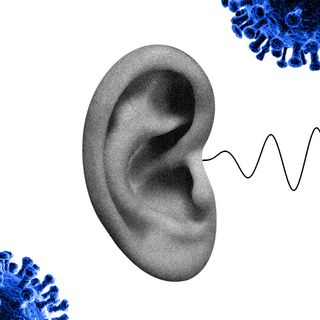Extreme workout regimens are now linked to developing insulin resistance and other metabolic changes, finds a new study exploring the effects of high-intensity interval training (HIIT).
While exercise is generally known to improve heart and metabolic health, the results for this study suggest a point exists where exercise turns detrimental, impairing metabolism and other bodily functions.
“It’s quite similar to the changes that you see in people that are starting to develop diabetes or insulin resistance,” study author Filip Larsen, of the Swedish School of Sport and Health Sciences, told The Scientist.
The study, however, does not determine what, if any, long-term consequences might arise from high-intensity exercise.
Related on The Swaddle:
New Research Upends Everything You Know About Diet and Exercise
“All athletes know if you train too much, something’s happening,” Larsen said. “That hasn’t been really described in the literature — no one knows exactly what’s going on.”
In order to find out, Larsen and colleagues put 11 healthy people through a four-week, increasingly intense regimen of HIIT sessions to find out. The study monitored their glucose, cellular energy production, physical exercise capacity, and metabolism while they went through intensive training on a stationary bike. They found that during the toughest week of exercise, the subjects displayed insulin resistance and other damaging metabolic changes.
The first two weeks of the schedule showed results that exercising typically shows — an increased mitochondrial capacity, i.e. cells made better use of oxygen to produce energy. This was one of the markers of a more efficient metabolism. The subjects also showed an improvement in other physiological parameters such as the rate at which cells use oxygen.
But this changed in the third week when the intensity of the workout massively increased. The subjects’ intrinsic mitochondrial respiration — the capacity of cells to produce energy from oxygen — fell by an average of 40% compared with the samples taken at the end of week 2. Furthermore, the subjects’ glucose tolerance dropped, a risk factor for developing diabetes and cardiovascular diseases.
The short recovery period of week 4 saw most bodily functions return to normal. The subjects’ cellular oxygen consumption rate and power output during exercise were higher after recovery than at any other point during the experiment. However, their cells’ ability to produce energy from oxygen did not fully recover even by the end of the experiment.
In addition to this measuring the bodily functions of the subjects, the researchers also monitored blood glucose levels in 15 elite athletes who regularly exercise in similar HIIT fashion. On average, the researchers found the athletes’ blood glucose levels were about the same as their subjects in the study — but athletes spent longer with their glucose levels either above or below average levels. This suggests that in the long-term, extreme workouts might impair sugar levels in the body.
The study, however, does not determine the long-term consequences of HIIT training for an average exerciser. Moreover, it is not clear how, or if, this would affect Indians — who are already known to have greater insulin resistance than average and an increased vulnerability to diabetes.
Linda Pescatello, who studies the health effects of exercise at the University of Connecticut and was not involved in the study, told The Scientist, “these extreme forms of exercise … do not apply to the general recreational exerciser, but I think the overarching principles about training are [applicable].”
The bottom line is: all in moderation if you want to maximize the health benefits of exercise, say researchers.




